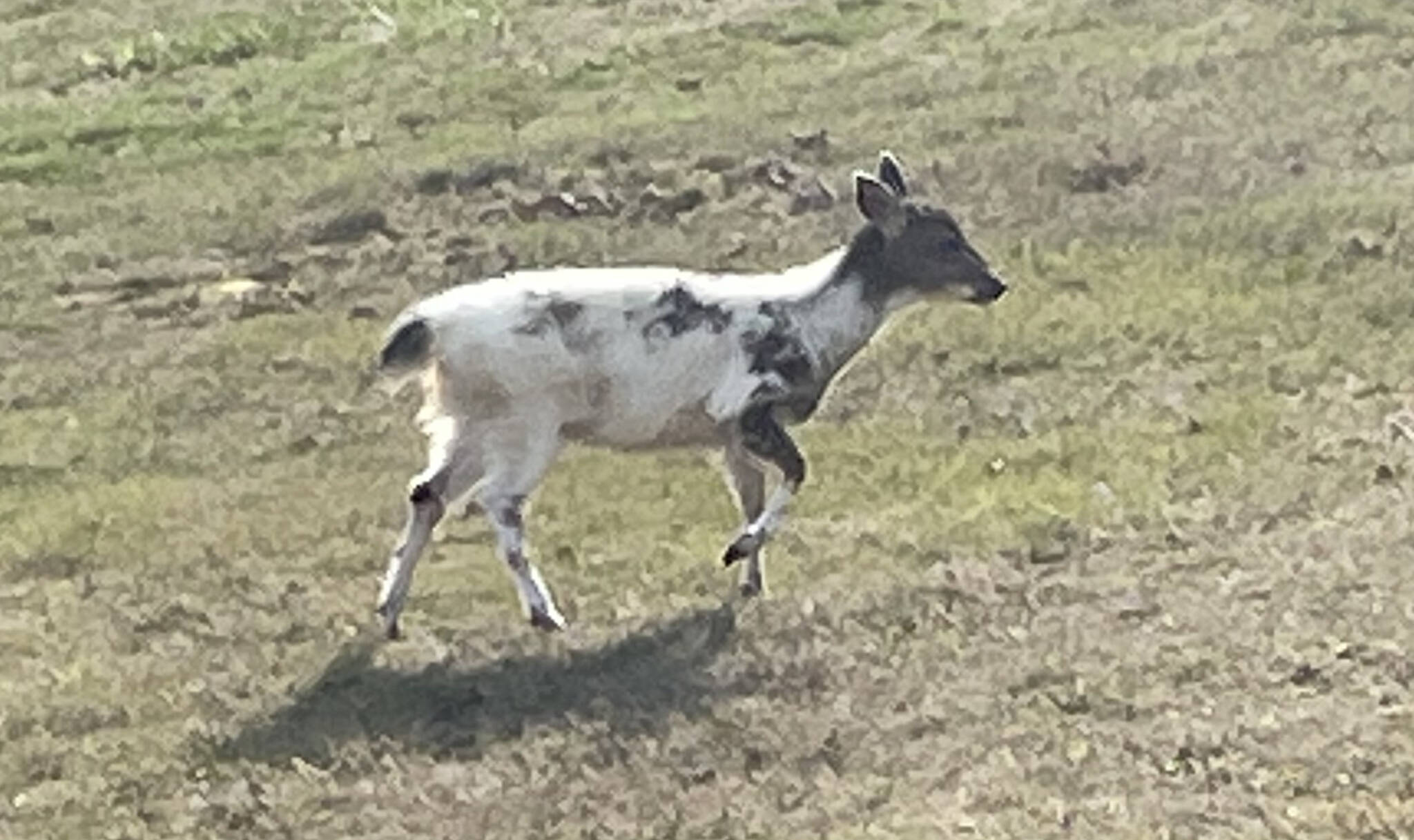At first, Patty Cole thought the white animal with brown spots near her Strawberry Point home was a goat. But on closer inspection, she realize that it was a fawn following its normal-looking mother up a hill.
The eye-catching animal, it turns out, is the newest member of a unique wildlife legacy on Whidbey Island that has been catching people’s eyes for decades. An unusual number of the blacktail deer that populate the island are piebald, according to Ralph Downes, an enforcement officer for the state Department of Fish and Wildlife.
Piebaldism is a recessive trait that affects the coloring of deer and is distinct from albinism. The piebald deer on the island can range from being brilliant white to a light tan color, while some have spotted “appaloosa” coats, Downes said. He’s aware of a few other piebald deer currently living on Whidbey.
“They are happy, healthy deer that are just differently colored,” he said.
Downes points to the limited gene pool of an island environment as a reason for the higher-than-normal number of piebald deer. It’s something he also sees in the San Juan islands.
“I swear the deer on Orcas Island are getting shorter legs,” he said with a laugh.
About 25 years ago, a small herd of piebald deer lived in the Deception Pass area, according to Downes. As many as eight of the deer could be seen together near Cornet Bay. In more recent years, most of the photos of piebald deer sent to the News-Times have come from the Central Whidbey area.
Kurt Licence, a wildlife biologist for state Fish and Wildlife, noted a dearth of studies about piebald blacktail deer and, as a result, many unknowns persist. The prevalence of the pigment-challenged deer, for example, is unknown in the general population. The gene that causes the unusual coloring is also linked to skeletal and internal organ development, which is why healthy piebald deer are so rare.
In addition, he explained that the coloring makes them more visible, which puts them at greater risk of predation.
A lack of large predators, relatively temperate weather and an abundance of food on Whidbey Island keeps the deer population healthy. In fact, it’s a bit too healthy. Fish and Wildlife has a program that urges deer hunting on the island as a way to help control the population.
Licence said deer overpopulation has a detrimental impact on wild lands and other wildlife, especially pollinators. They can also be a major annoyance for gardeners and a public safety risk for drivers.
Downes said a study showed that Central Whidbey has the greatest number of deer on the island with about 10 per square mile — though the density is significantly higher inside Coupeville town limits. The average density on the island is about eight or nine deer per square mile, which means about 1,500 deer call Whidbey home.
While it’s a significant population, Downes said, Blakely Island in the San Juans has a much greater problem with 35 deer per square mile.
Licence noted that the newest piebald deer was spotted in Strawberry Point on North Whidbey, which is also home to an intrepid bull elk known as Bruiser.
“There’s all kinds of interesting ungulate activity happening there,” he said.



